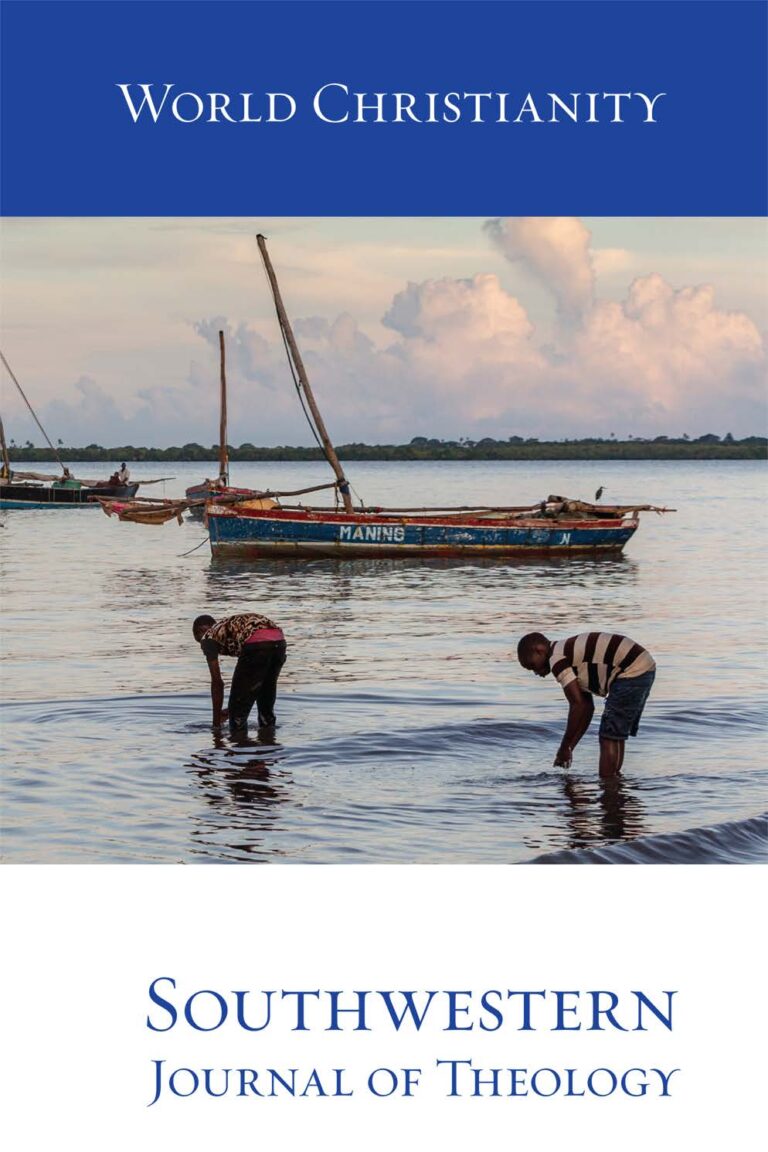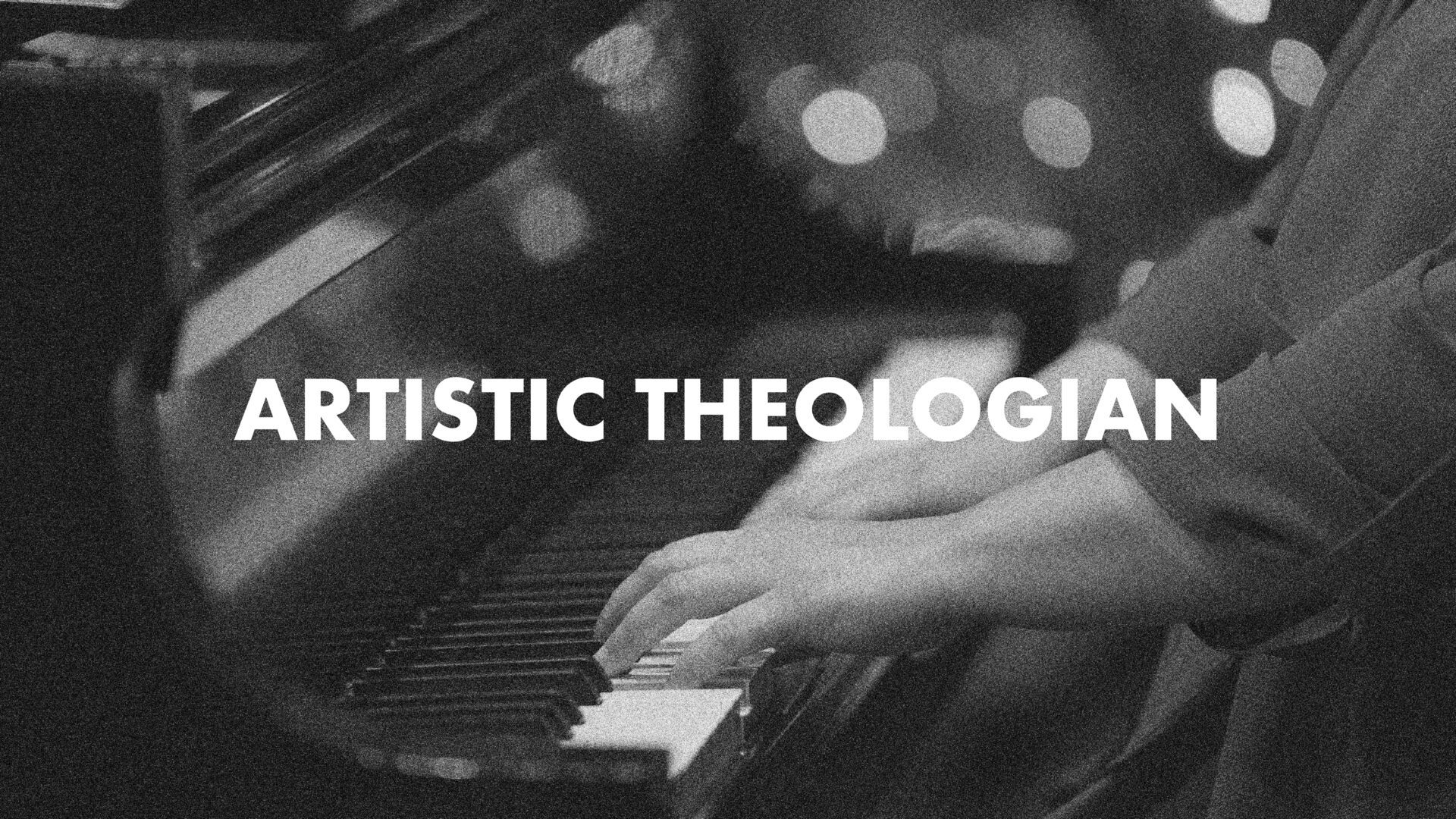
World Christianity
Southwestern Journal of Theology
Volume 61, No. 2 – Spring 2019
Managing Editor: W. Madison Grace II
3 Volumes. Edited by David Hellholm and Dieter Sänger. Tübingen: Mohr Siebeck, 2017. lx 2199 pages. Cloth, $435.00
The subject three-volume project was a continuation of the previous three-volume research project “Ablution, Initiation, and Baptism” but with “reference to another subject”––the Eucharist (xxxiii). The Organizing Committee is represented by researchers of differing theological backgrounds from Germany and Scandinavia. Contributors to the project are “Christian and non-Christian” scholars “from all around the world,” and from multiple fields of research and study, including “History of Religion, Egyptology, Classics, Ancient History, Old and New Testament, Judaism, Patristics, Archaeology, and History of Art” (xxxiii).
The initial essay by Körtner acts as an introduction to the project and contours many of the essays, though it is provided in German only (1–21). The essay emphasizes ecumenism (9–13) and theology (18–20), while pushing for further study. The first English essay by Altmann (23–41) notes the trend in Eucharistic research towards “Greco-Roman symposium-esque features,” but also points out neglected Old Testament contexts (24). Concern over “the Passover Seder from the medieval Passover Hagaddah” and its anachronistic use is helpfully discussed (23; and passim vol. 1).
How meals functioned sociologically in the ancient world (both Jewish or early Christian, but also Greco-Roman), with interest on the feasting community and its variegated rituals, is contoured in several early essays (Altmann, 23–41; Eidevall, 43–59; Jacobs, 161–76; Sänger, 181–222) and some later essays (Leonhardt-Balzer, 258; Leonhard, 308; Kelhoffer, 313–29; Marguerat, 513–35; Winninge, 582–83; Vegge, 645–71; Ulfgard, 697–731). Among the earlier essays, roles (host, priest, victim, laity, etc.), arrangements (consecration, seating, calendar dates, lamb or goat, location, etc.), and elements (the sacrifice, wine, meat, blood, etc.) are explicated in terms of their social-symbolic meanings (honoring kinship and friendship, strengthening solidarity, Yahweh or the deity as a guest of honor, observing occasions of sacrifice, celebrating, dedicating the Jerusalem temple, royal banqueting, destruction, victory, covenanting, divine-human interaction).
Communal meals and their customs (e.g. purity/impurity) at Qumran are discussed in two essays (Wassén, 77–100; Frey, 101–30), as well as Magness’ reassessment of sacrificial practices at Qumran (131–55; towards a positive conclusion). Food/eating customs in Tobit and Aristeas are discussed by Jacobs (157–79). Sänger emphasizes the “formulaic references to the bread of life, cup of immortality, and ointment of incorruption” in Joseph and Aseneth as symbolic of Jewish religious customs in general, rather than pointing to a specific sacred meal (181–222). A further, inspiring essay by Hartvigsen draws richly on the same text while emphasizing the narrative importance of food, drink, ointment, and honeycomb (223–51). Leonhardt-Balzer’s essay examines Philo and Josephus’s mention of meals, and draws parallels with the Greco-Roman context (253–73; see 258 for the notable mention of Philo’s likening of the symposiarch to the Logos, συμποσίαρχος λόγος; Philo Somn. 2.249).
Moving into the New Testament, the importance of Exodus 12 as a script for Passover celebration is discussed by Leonhard, but with a negative conclusion; Exodus 12 is considered a cult etiology (276–87). A chronologically sensitive comparison of the Last Supper with later Rabbis and Haggadah is carefully discussed with several profitable insights (287–305). Further, for Leonhard, the Upper Room setting of the Last Supper is considered plausible, though the social status of those present is not (308). The association between Pesach and Eucharist is, then, one of early Christian “theological imagination” owing to the proximity of Jesus’ final meal with Passover (308). Finally, certain Seder features “must be understood as instances of Greco-Roman communal meals” rather than Jewish customs (276). John and Jesus and their respective non-participation and participation in meals inform the next essay by Kelhoffer, with careful exegetical argumentation and an interest in social capital/power (313–29). Ådna’s essay makes excellent use of the criteria of authenticity in establishing Jesus’ table fellowship with tax collectors and sinners against the skepticism of, specifically, Dennis E. Smith (331–53).
Holmstrand examines Jesus’ feeding of the multitudes (numerous texts are considered, though Mark 6:30–44 is given priority), and their reception in the first three centuries AD (355–88), a reception that is admittedly small (only eight references; cf. 385). Blomqvist and Blomqvist provide an exciting philological study of related Eucharistic vocabulary attested across several texts/sources from the period of c. AD 50–200 (389–421). Byrskog helpfully examines the symbolic actions of Jesus that are a critique of the Temple and cult (Mark 11:1–11; 11:12–14, 20–25; 11:15–19) as well as his counter-temple teaching (Mark 11:27–33; 12:1–9; 12:35–37a; 12:37b–40; 13:1–2), before examining the Mark/Matthew and Luke/Paul forms of the tradition while making use of social memory (428–36; 436–45). Specific features (forgiveness of sins, new covenant, etc.) that speak clearly of the Supper’s significance are taken as secondary, though Byrskog desires such significance for Mark (443). Lastly, a pre-Markan Supper text in Greek is neatly hypothesized (444). Sandnes’ essay (453–75) is an excellent comparison between the Markan and Matthean accounts and, taken together with Byrskog’s essay, stands in stark contrast to the negative findings of Kazen, who essentially repristinates the skepticism of Jesus questing observable from the late nineteenth century onward (477–502).
Popkes’ essay focuses on Luke 24 and John, and positively assesses their knowledge of the Supper’s institution, though neither is (said to be) explicit in their Gospels (503–512); meals in Acts (and Luke) are treated in the following essay by Marguerat, who points out their social significance (513–535). Next is Müller’s treatment (537–554) of the strong and the weak in Romans 14–15 (with reference to 1 Cor 8:10), followed by Duff ’s helpful exegetical essay on 1 Corinthians 11:17–34 (555–78). Winninge’s essay comparing 1 Corinthians 11 with Luke 22 is a well-written study exploring several difficulties in Supper scholarship (e.g. the text-critical problem in Luke 22:19b–20, which he sees as textually authentic; Luke’s reliance on Paul mostly but sometimes Mark, as in “poured out … for”; the memorializing aspect, also seen as a late development, perhaps owing to Greco-Roman culture; the new covenant, which is considered a later addition; Pesach, also a late addition; libation; etc.); he further details an (oral) traditioning history (579–602). Nevertheless, he observes a Greco-Roman symposium behind certain features of the Supper and discerns “Pesach connotations” as late (cf. 599–600). John examines Peter’s Antioch controversy as attested in Galatians 2:11–21 (603–24; he understands the table fellowship controversy as encompassing the Lord’s Supper and reflective of a Judeo-Christianity schism). Löhr (625–44) assesses the meaning of subsequent sacramental terminology, including communio and participatio. Vegge’s essay (645–71) looks at additional New Testament scriptures, specifically Colossians and Jude 12, and is methodologically informed by the sociological models of Theissen and Lindbeck. His treatment of Jude is especially helpful.
Ulfgard helpfully examines meals and eating in Revelation (673–95). Revelation 3:20 is seen as an eschatological messianic banquet (681); also discussed is the marriage supper of the Lamb and additional eschatological eating/drinking, including the tree of life and the hidden (eschatological) manna (683–90). “Anti-divine meals,” meaning meals symbolic of divine judgment (Rev 2:14–16, 20; 17:16; 19:17–18), are also discussed (690–92). Bormann (697–731) examines the cultural-anthropological dimension. And finally, Weidemann (733–69) draws a connection between baptismal accounts in Luke and Paul (primarily) and table fellowship/eucharistic practices.





